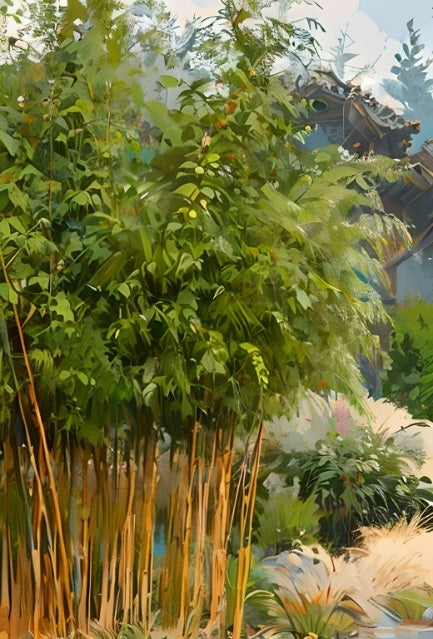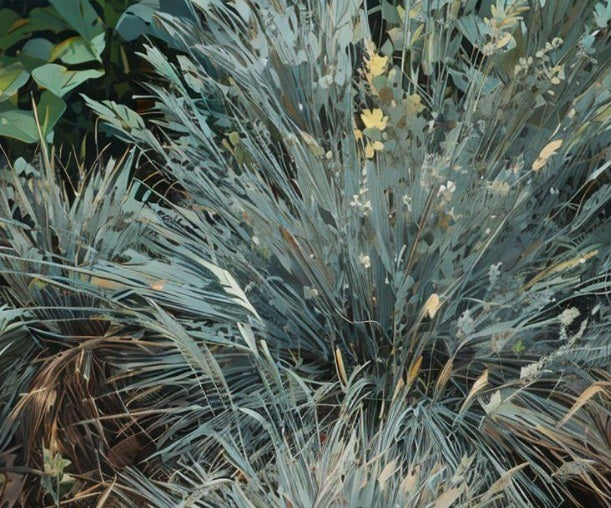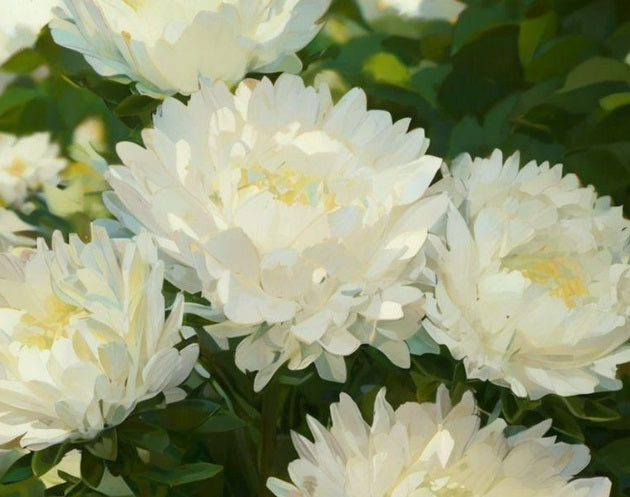Bamboo Finder
Compare Bamboo Characteristics
Use our Bamboo Finder chart below to easily compare bamboo growth characteristics and recommendations to find the best bamboo seeds for your location and landscaping needs.
In this article:
- Identify Your Planting Zone
- Find Bamboo Suitable for Your Zone
- Bamboo Finder Comparison Chart
- Planting Bamboo Outside the Zone
Identify Your Location's Planting Zone
We recommend that you first identify your planting zone. Geographic planting zones (sometimes referred to as "cold hardiness zones") are created by most developed nations to assist with choosing plants that are recommended for planting in specific geographic locations. Every plant is assigned recommended planting zones.
For example, in the US, Moso Bamboo is recommended for planting in USDA planting zones 7 through 10. So if you live in USDA Zone 8, Moso Bamboo is recommended for planting in your location.
On the other hand, if you live in USDA Zone 12, Moso Bamboo may not be the optimal choice for planting because the higher temperatures and intense sun in Zone 12 are significantly warmer than Moso Bamboo's natural habitat. Absent supplemental watering and some protection from intense mid-day sun, Moso bamboo planted in Zone 12 would likely grow and develop below its characteristic potential. If you live in Zone 12, there are a number of other bamboos rated for your planting zone that would vigorously thrive in your warmer location, such as Black Asper Bamboo and Burmese Bamboo, both recommended for USDA Planting Zones 9 through 12.
Find Bamboo for Your Location and Landscaping Objectives
Once you know your designated planting zone, you can use the chart below to select from all the bamboos that are recommended for planting where you live. Refer to the numerical ratings in the "USDA Zones" column to identify the bamboo seeds and seedlings that are suitable for your designated geographic planting zone.
Click on a linked bamboo name in the chart below to view its respective listing page where you'll find more detailed information and images for that particular bamboo. We've also included for informational purposes some species that we've offered in the past but are no longer available; those discontinued seeds are listed under "N/A."
Bamboo Finder Comparison Chart
Legend:
Common name: Universally or regionally recognized name.
Scientific name: Botanical designation.
C/R: Clumping or Running growth habit - "C" clumping is self limiting, with the root network typically remaining within about 5' of the mother plant; "R" running is expansive, spreading outward from the mother plant via underground rhizomes unless contained.
USDA Zones: Recommended cold hardiness planting zones for optimal growth; can also plant in the colder zones displayed in blue with seasonal winterization.
Height: Average height at maturity in optimal growing conditions.
Common Name |
Scientific Name |
C/R |
USDA
|
Mature Height |
| BAMBOO SEEDS | ||||
| Paper, Umbrella | Fargesia gaolinensis | C | 6, 7-9 | 12-22' |
| Moso, Tortoise Shell | Phyllostachys edulis | R | 6, 7-10 | 25-60' |
| Frost, Narrow Leaf | Fargesia angustissima | C | 6, 7-9 | 13-23' |
| Chocolate | Fargesia fungosa | C | 7, 8-9 | 13-20" |
| Black Asper | Dendrocalamus asper | C | 8, 9-12 | 60-100' |
| Burmese | Bambusa polymorpha | C | 8, 9-12 | 40-80' |
| Temple, Monastery | Thyrsostachys siamensis | C | 8, 9-12 | 50-65' |
| Waya, White | Dendrocalamus membranaceus | C | 8, 9-12 | 35-50' |
| Longinternode | Bambusa longinternode | C | 8, 9-12 | 32-50' |
| Bengal, Indian Timber | Bambusa tulda | C | 8, 9-13 | 50-65' |
| Sweet Shoot, Taiwan Giant | Dendrocalamus latiflorus | C | 9, 10-12 | 45-60' |
| BAMBOO SEEDLINGS | ||||
| Moso Bamboo Seedlings | Phyllostachys edulis | R | 6, 7-10 | 25-60' |
| Temple Bamboo Seedlings | Thyrsostachys siamensis | C | 8, 9-12 | 50-65' |
| Asper Bamboo Seedlings | Dendrocalamus asper | C | 8, 9-12 | 60-100' |
| Giant Bamboo Seedlings | Dendrocalamus giganteus | C | 8, 9-12 | 60-100' |
| Waya Bamboo Seedlings | Dendrocalamus membranaceus | C | 8, 9-12 | 40-60' |
| Burmese Bamboo Seedlings | Bambusa polymorpha | C | 8, 9-12 | 40-80' |
| N/A | ||||
| Blue Dragon | Borinda papyrifera | C | 5, 6-9 | 13-23' |
| Guizhou | Fargesia guizhou | C | 5, 6-9 | 10-15' |
| Fountain | Fargesia nitida | C | 5, 6-9 | 10-15' |
| Madake | Phyllostachys bambusoides | R | 6, 7-10 | 40-60' |
| Southern Yunnan | Fargesia s. yunnan | C | 6, 7-9 | 10-15' |
| Hardy Umbrella | Fargesia yunnanensis | C | 6, 7-9 | 9-15' |
| Dragon, Giant | Dendrocalamus giganteus | C | 8, 9-12 | 80-100' |
| Indian | Dendrocalamus calostachyus | C | 8, 9-12 | 65-80' |
| Tinwa | Schizostachyum pergracile | C | 8, 9-12 | 32-50' |
| Grandis | Dendrocalamus membranaceus grandis | C | 8, 9-12 | 35-50' |
Planting Bamboo Outside the Zone
Keep in mind that planting zones are recommendations for planting to achieve optimal growth without additional protections. People can and often do successfully plant and grow plants that are rated outside of their location's planting zone. A plant can be grown in a colder zone with lower winter temperatures when it's properly winterized, or in a warmer zone when protected from intense sunlight and extreme heat and supplementally watered. With a little extra care and maintenance, there is flexibility in selecting plants recommended for planting in zones either colder or warmer than your designated geographic planting zone.
When planted in zones that significantly depart from the planting recommendations, bamboo height and expansion is typically reduced. For example, a running bamboo recommended for zones 9-10 will ultimately demonstrate more limited expansion outward via rhizomes when planted in Zone 7 or 8. An evergreen bamboo recommended for zones 8-10 will likely die back during Zone 6 Winters, and re-emerge in Spring.
Facts About Bamboo Resources
You'll find additional resources to assist you with selecting, growing, and caring for your bamboo plants in our online library of articles about bamboo, including:
- USA and International Plant Hardiness Zones
- Choosing Bamboo Seeds for Your Location and Landscaping Goals
- How Fast Does Bamboo Grow?
Rev. 121325
Collections
-

All Bamboo Seeds for Sale
Welcome to our catalog of bamboo plant seeds for sale including clumping...
-

All Ornamental Grass Seeds
Grass has finally come into its own as a garden landscape centerpiece....
-

All Flower Seeds
All of our 2025 flower seeds are sold out. Please check back...



